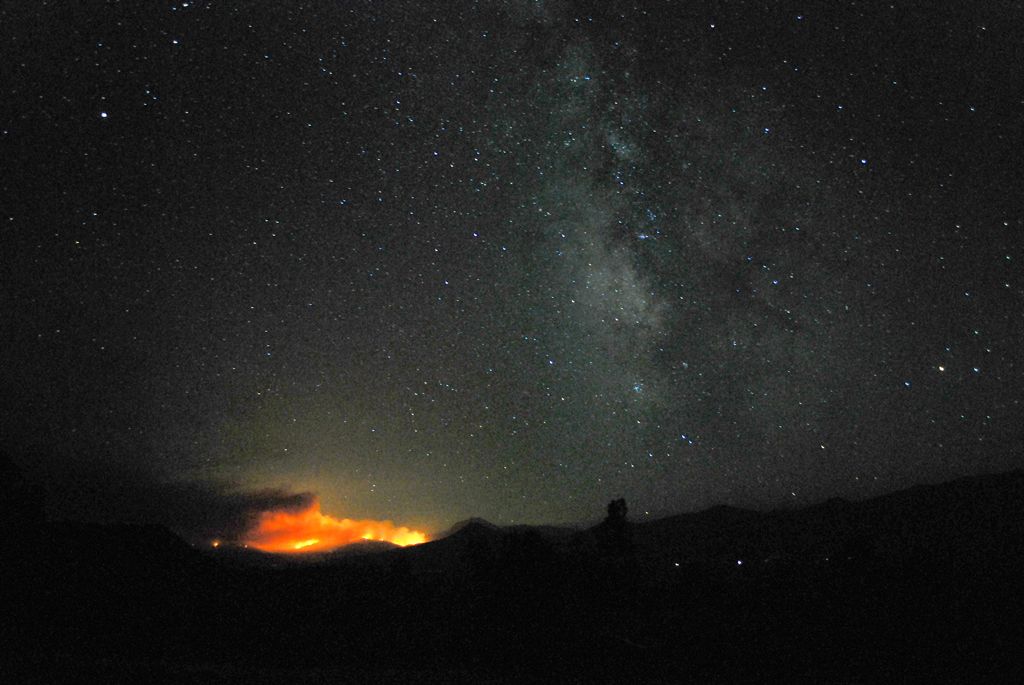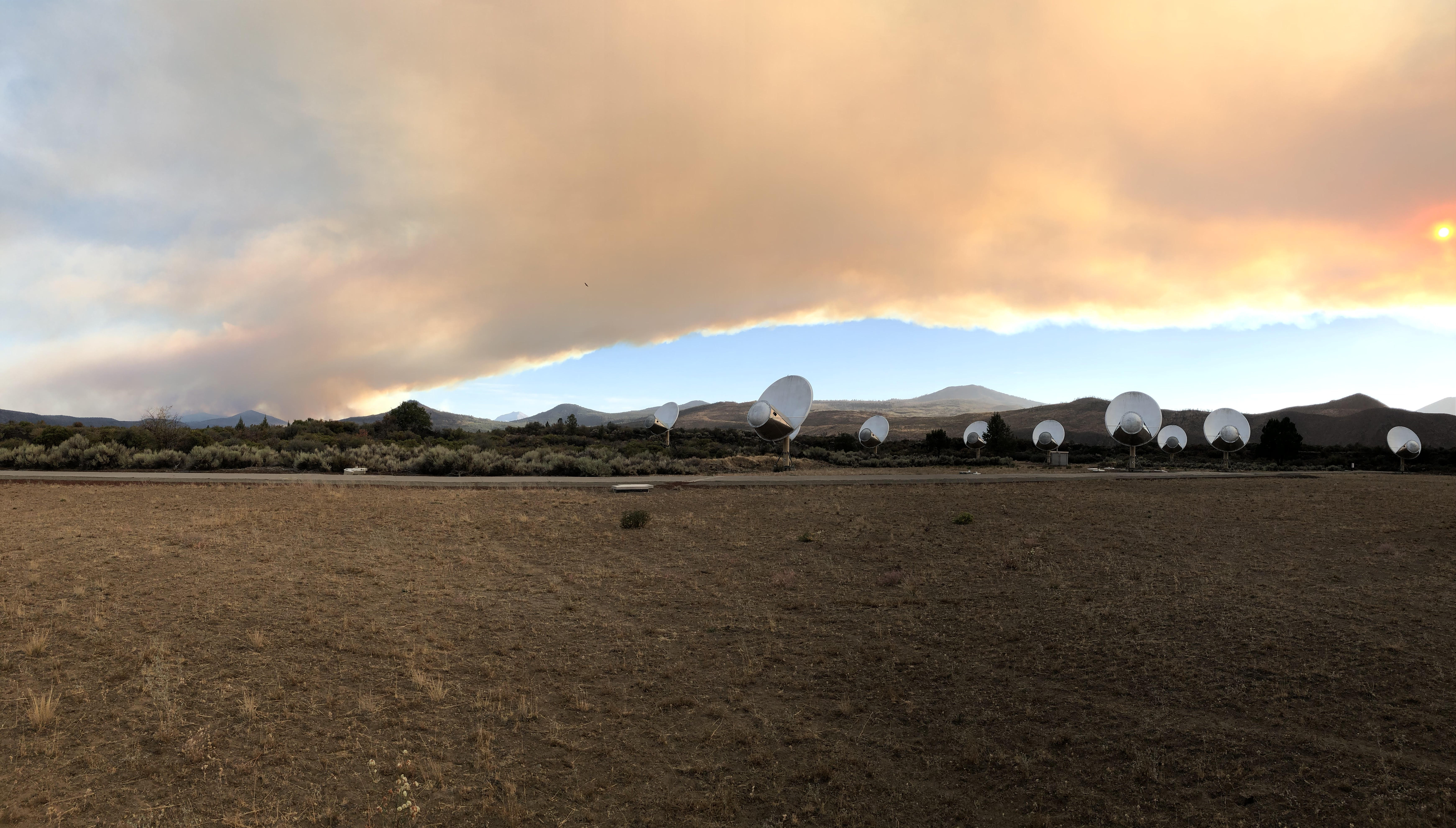Massive California fire comes within miles of alien-hunting radio telescope array

Climate change on Earth — and the brutal repercussions it causes — might interfere with the search for life far beyond our own planet.
The SETI Institute's The Allen Telescope Array (ATA) in northern California is a vital tool for scientists monitoring for so-called "technosignatures," or the hoped-for signals of a technologically advanced civilization beyond Earth. Last week, on Sept. 9, the massive Dixie Fire came within 8 miles (13 kilometers) of the observatory, threatening its 42 antennas. Now, the fire seems to have stabilized and personnel hope that the radio array will be back to work within a month or so.
"We are hopeful now with the weather that the conditions don't change and it looks very promising," Alex Pollak, science and engineering operations manager for Hat Creek Radio Observatory, which includes the ATA, told Space.com. "We are, I would say, mildly optimistic that we are over the worst."
Related: The devastating wildfires of 2021 are breaking records and satellites are tracking it all
The Dixie Fire is the second-largest fire on record in California and the largest in the nation this year to date, according to the Washington Post. Typically, the fire season is worst in the autumn, and fire seasons have been becoming noticeably more brutal as the impacts of climate change have accelerated. Climate change reduces humidity and increases temperatures, both of which tend to exacerbate fires.
The Dixie Fire has been burning since mid-July and has covered nearly 1 million acres during the two months it has blazed, according to CAL FIRE.
Pollak said that the team overseeing the ATA had prepared for the possibility the Dixie Fire would approach the observatory after warnings spread earlier in the summer. "We knew the fire might come close," Pollak said. "It was definitely scary to see how fast the fire can actually move in the right weather conditions."
Breaking space news, the latest updates on rocket launches, skywatching events and more!
The ATA worked with CAL FIRE and the fire department of the U.S. Forest Service, which owns about half the land the observatory covers, to prepare the facility and plan how to manage the site if the fire came too close for comfort.
Work teams spent two weeks in late August clearing out brush and trimming low branches in the area surrounding the antennas, Pollak said. The observatory couldn't operate during that work, he added, because of the high-powered communications gear used by the ground crew. "They can actually kind of damage our receivers," he said. (This same sensitivity is why radio telescopes tend to be located in remote areas, where such interference is minimal.)
While the ATA antennas can't move, they can point in different directions, so Pollak and his colleagues planned to rotate the antennas toward the center of the observatory site. That arrangement would shield the receiver's sensitive electronics from the worst of the flame's heat with the aluminum of the dish.
The team also planned how to reduce activity at the site to a minimum without fully abandoning the receivers, which are cryogenically cooled. "If we have to shut everything down, it's a very long process of getting the antennas up and working," he said.
The Dixie Fire came within sight of the facility on Sept. 7, he said. "We could see it on Tuesday burning down the hills, but not moving very fast." That changed on Sept. 9, when the fire crossed the road south of the ATA.
Despite the close approach, the facility got lucky.
"After that, in the evening, the wind died down and then throughout the night the situation improved," Pollak said. He's still monitoring heat maps for any potential uptick in fire activity, but so far, the situation appears stable and the fire hasn't moved much since, he said.
Although six people are usually on site at the observatory, right now the site is operating with half its typical staff due to the blaze and remains under an evacuation warning, while the observatory's surroundings remain evacuated.
"It's, I would say, kind of exciting, but not in a positive way," Pollak said. "It's preparing for the worst but then there's hope that the worst never happens."
He hopes that if the winds remain calm and fire containment proceeds as it has been, the facility could be back to normal observations within about a month.
Email Meghan Bartels at mbartels@space.com or follow her on Twitter @meghanbartels. Follow us on Twitter @Spacedotcom and on Facebook.

Meghan is a senior writer at Space.com and has more than five years' experience as a science journalist based in New York City. She joined Space.com in July 2018, with previous writing published in outlets including Newsweek and Audubon. Meghan earned an MA in science journalism from New York University and a BA in classics from Georgetown University, and in her free time she enjoys reading and visiting museums. Follow her on Twitter at @meghanbartels.


